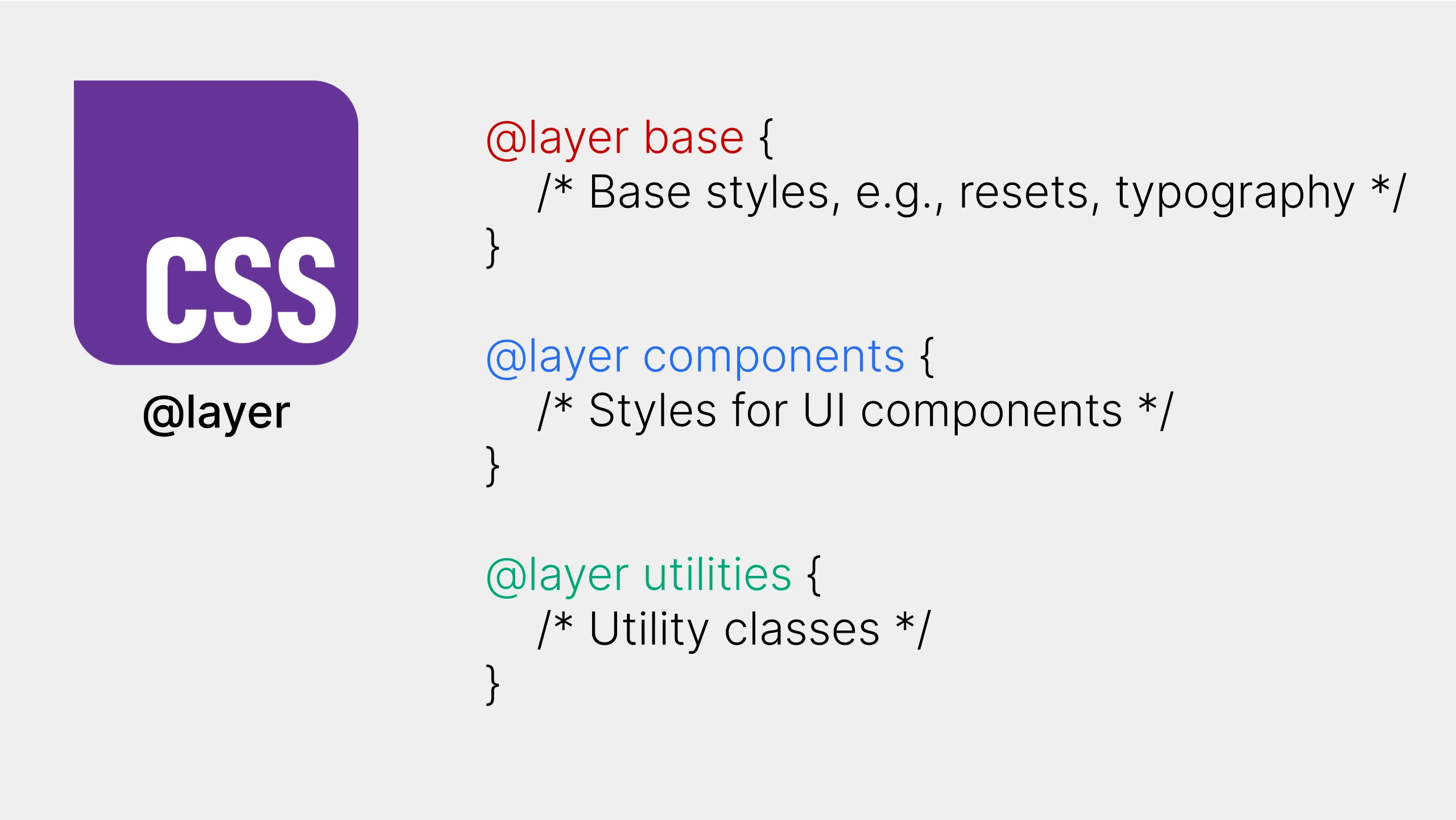
Mastering CSS Cascade Layers: Organize Your Stylesheets
CSS Cascade Layers: A Guide to Better Style Management
CSS Cascade Layers are a new feature that provides web developers with more control over the CSS cascade, allowing for more organized and maintainable stylesheets. They help manage the complexity of CSS specificity, especially in large projects with multiple style sources.
Understanding the CSS Cascade
The CSS cascade is the process browsers use to determine which styles apply to an element when multiple conflicting styles are declared. It considers factors like:
- Origin: Styles from browser defaults, user stylesheets, and author stylesheets.
- Specificity: How specific a CSS selector is.
- Order of appearance: The order in which styles are declared in the CSS.
Traditionally, managing specificity and style conflicts could become challenging, often leading to verbose CSS or reliance on !important.
Enter Cascade Layers
Cascade layers introduce a new level of organization within the cascade. They allow you to group CSS rules into layers and define the order in which these layers are applied. This means you can prioritize entire categories of styles, making it easier to manage styles from different sources or components.
Benefits of Cascade Layers:
- Specificity Control: Gain explicit control over style precedence without resorting to overly specific selectors or !important.
- Organization: Structure your CSS into logical layers (e.g., base styles, component styles, theme styles, utilities).
- Maintainability: Improve CSS maintainability by reducing specificity conflicts and making it easier to understand style origins.
- Third-party Styles: Manage and override styles from third-party libraries or frameworks more effectively.
How to Create Cascade Layers:
You can create cascade layers using the @layer at-rule in CSS:
CSS
@layer base {
/* Base styles, e.g., resets, typography */
}
@layer components {
/* Styles for UI components */
}
@layer utilities {
/* Utility classes */
}The order in which you declare @layer rules determines their priority. Layers declared later have higher priority. In the example above, utilities layer styles will override styles in the components and base layers.
Example:
CSS
@layer base, components, utilities; /* Layer order declaration */
@layer base {
body {
font-family: sans-serif;
line-height: 1.5;
}
}
@layer components {
.button {
padding: 10px 20px;
background-color: #eee;
}
}
@layer utilities {
.button {
background-color: blue; /* Will override component layer's background-color */
color: white;
}
}In this example, even though the .button selector in the components layer might be as specific as or more specific than the one in the utilities layer, the utilities layer styles will take precedence due to the declared layer order.
Conclusion CSS Cascade Layers offer a powerful way to manage CSS specificity and organization. By grouping styles into layers and controlling their order, you can create more maintainable, understandable, and robust stylesheets for your web projects. Start experimenting with cascade layers to experience a more streamlined CSS authoring workflow.
For more in-depth information, you can refer to the MDN documentation on Cascade Layers.
Browser Support:
Cascade layers
Baseline Widely available
Supported in Chrome: yes.
 Supported in Edge: yes.
Supported in Edge: yes.
 Supported in Firefox: yes.
Supported in Firefox: yes.
 Supported in Safari: yes.
Supported in Safari: yes.

This feature is well established and works across many devices and browser versions. It’s been available across browsers since March 2022